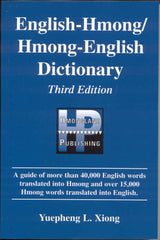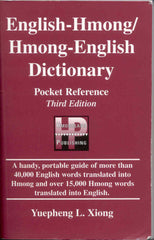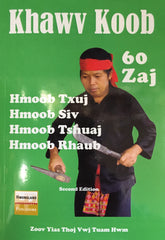Harvesting Pa Chay's Wheat: The Hmong and America's Secret War in Laos
Paperback, 638 pages, 6x9, English
by Keith Quincy
ISBN: 978-0-9628648-4-1
The 13-year covert, American-run war against North Vietnam and the Communist Pathet Lao in Laos ended in 1973. Quincy's dense but rewarding study--which takes its title from a messianic Hmong farmer who led an armed rebellion against the French in the early 1920s--gives a detailed history of political upheavals and wars in the region, beginning in the 14th century, but the focus is on the upland Hmong tribespeople who were U.S. allies for the Laotian campaign. Several other well-researched books have covered much of the same territory in depth. Quincy, chair of the department of government at Eastern Washington University, adds more voices to that research, using hundreds of interviews he conducted with the Hmong (many of whom now live in the U.S.) in the 1980s and 1990s to bring the corruption and brutality among the group's leadership further to light. (One researcher involved with the project has received death threats.) By 1977, more than 100,000 Laotian refugees, not all of whom were Hmong, had crowded into camps on the Thai border. Some remained for 15 years, Quincy argues, because agents of the exiled Hmong leadership "were able to persuade, cajole, and intimidate most refugees to forego resettlement... to provide guerrillas for the Neo Hom resistance, the magnet for financial contributions. This well-written narrative clearly shows that the secret war's biggest losers were the Hmong, who did most of the fighting--and dying--against the North Vietnamese.
The Hmong people, also known as Miao or Meo, are active participants in and tragic victims of modern nation formation and the Cold War. Quincy (Hmong: History of a People), an established scholar of Laos and the Hmong, energetically relates their experience and the history of Laos over the last century with deep feeling, telling detail, and occasional dark humor, using written sources, personal observation, and interviews. The Hmong started as a tribal society in the south of China, where contending Hmong family leaders fought both against each other and the outsiders who tried to dominate, co-opt, or exterminate them. Eventually, they migrated to Laos, where they established themselves by force. French colonialists enlisted Hmong leaders as allies. Then American Cold Warriors took over the murderous battle against the Vietnamese and their revolution, until finally the remaining Hmong fled to Thailand and the United States. This sad but colorful story will appeal both to general readers interested in Cold War history and to scholars.






